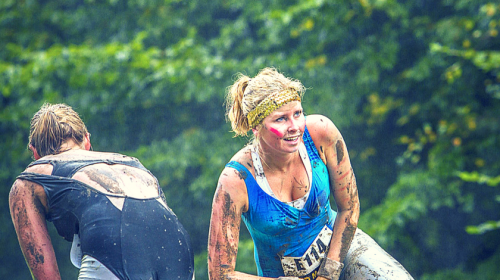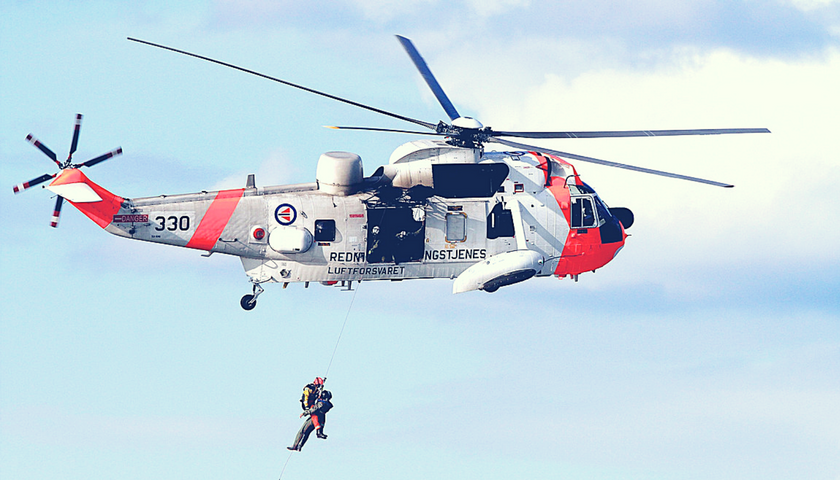Like so many Americans, my heart truly goes out to the victims of Harvey, and my admiration goes out to the amazing rescuers. The scope of this disaster is unprecedented, and thankfully the outpouring of support has been overwhelming.
The ordeal is hardly over for Houston and adjoining areas, with new storms like Irma barreling toward us.
Watching a TV image of a displaced person resting in a shelter got me thinking. Once they have gotten the rest they need, they will then need to maintain or build their physical conditioning.
I then considered how strikingly out of condition the average American is, and how it can potentially affect their survivability during a crisis, or their ability to rescue another human being.
It has been good to witness the resurgence in “functional” training, led by CrossFit, Spartan Races, progressive calisthenics, heavy barbell work, and kettlebell training, among so many others.
Yet there still exists a great mass of deconditioned Americans. They are unlikely to fare well in a crisis – any crisis. I say “any” for a reason: it is far more common for someone to succumb to a self-created crisis, formed by poor sleep, nutrition, exercise, and stress habits than it is for them to succumb to an external crisis.
Physical Preparation for a Crisis
So how should the average person prepare for a crisis, or avoid a self-inflicted one? We have all heard what we should do to become “healthy and fit” many times. And we’ve been told we need more willpower to accomplish it. But with ever-increasing demands on our time, what if we don’t have much time and willpower?
I prefer the simplest solutions possible; ones that people will actually implement in their lives.
 So what are the key physical attributes necessary to help prevent or withstand a crisis?
So what are the key physical attributes necessary to help prevent or withstand a crisis?
- Strength / Power
- Endurance
- Balance
- Mobility
Now we could practice each of these attributes separately, but keeping time and energy efficiency in mind, which modes of fitness develop many of these attributes at once?
Sports: Many sports cover all the bases with the exception of strength building. The exceptions would be martial arts including boxing and particularly wrestling, which is well known to include some of the most grueling conditioning of any sport.
Free weight training: This covers all the bases except for, typically, endurance work. But this missing ingredient can be covered by increasing repetitions to twenty or higher; or by “supersetting” (switching back and forth between two exercises without rest); or by performing circuits (doing a number of exercises together without rest). Or for some serious free weight endurance, check out barbell complexes.
Strongman training: These activities can be performed with very high repetitions, or by pushing, pulling or carrying objects over distances, to cover all the bases. This kind of strength also lends itself well to “real world” activities, particularly ones that need to be performed in a crisis situation such as moving heavy sandbags to protect a home to minimize the effects of flooding, or pulling someone out of a car or building to safety.
Kettlebell training: For someone looking for the most efficient exercise possible that covers all the key attributes, I don’t think they can do better than working with these babies, which look like cannon balls with handles. Kettlebells have been in vogue for some time now, and their popularity does not appear to be waning—for good reason—they work.
Progressive calisthenics: This is my current favorite form of exercise. It involves moving one’s own body weight in various ways to produce strength and power, mobility, endurance, and balance—in short, all the key attributes needed for “crisis” training. But progressive calisthenics offers something more—the building of skills similar to those a gymnast would practice, and the pure fun and satisfaction of mastering these skills.
Resistance band training: Along with body weight training, bands offer the ultimate in workouts on the go. They are great for truckers, bus drivers or others who are often moving from place to place. That said, they can also be used in front of the TV. They offer unlimited angles and ranges of movement, and work with any body type. The movements can also be performed quickly. Combine them with power walking and mobility work and you have a complete workout.
 Add in an element of competition, such as a powerlifting meet, obstacle course race, or other physically taxing event, and you have a potent way to get into fantastic shape. Why? Because competing brings out the best in us, and catapults our gains in our chosen training discipline.
Add in an element of competition, such as a powerlifting meet, obstacle course race, or other physically taxing event, and you have a potent way to get into fantastic shape. Why? Because competing brings out the best in us, and catapults our gains in our chosen training discipline.
So what’s the minimum time requirement to get in or stay in shape? This is a commonly asked question, and there are many answers for it. I typically recommend three full body workouts per week, which would include warm-up, “work,” cardio, and cool-down. These four parts sometimes blend together, depending on the mode of exercise performed. And as the saying goes, there are lots of ways to skin the cat. For the busy person, just fifteen minutes a day of vigorous, comprehensive exercise will yield results.
The key is to do something. Just get started, and likely you will find the interest to spend enough time to get in or stay in shape.
You will be glad you did something the next time a disaster hits. But even if no external disaster strikes, if you are not getting sufficient sleep, overeating the wrong foods, not exercising, and reacting poorly to stress, you are a WALKING DISASTER and it’s only a matter of time till your number comes up. Don’t wait for a crisis to strike. Take proactive steps to become “Crisis Fit” now.
– – –
Patrick Rooney is the Founder and President of GREEK PHYSIQUE™, LLC, which specializes in functional body sculpting for men and women in Middle Tennessee and worldwide via phone and Skype. Patrick is Certified through the National Association of Fitness Certification (NAFC). Email questions or training inquiries to [email protected].






thanks for sharing these information. Nice blog indeed
[…] crisis, or to withstand an external one? Find out how to become “crisis fit” in my latest article at The Tennessee […]
Thank you, Rachel! Glad the article was a help to you. Building confidence in your ability to “do”–especially in a crisis–is a great and sometimes overlooked aspect to training. I’m also glad you noticed the many ways to being “crisis fit.” I wish you well on your fitness journey!
Excellent article! I have thought about this scenario many times, wondering if I would be fit enough to survive a crisis. And now that I have a personal trainer I feel my body is much more capable to handle a crisis. Also, loved that you covered so many choices of exercise.
Rachel Jones
Petaluma, CA